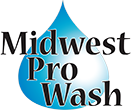If you are considering washing your own home, knowing and using the right cleaners to do the job can be a huge time saver and give you much better results.
Most of what you will be dealing with will be mold, mildew, algae, dirt, cobwebs, bird droppings, and bug fecal. Other contaminants not as noticeable are exhaust emissions from cars, trucks, airplanes and such. Also anything any nearby factories may be putting out will also land on your home.
The Vinyl Siding Institute (VSI) recommends using the following for small spots of mold or mildew. Small spots of mold and mildew can be handled with cleaners such as Fantastik® or Windex®. For larger sections, a solution of vinegar (30%) and water (70%) has proven successful. Alternatively, you also could try the following solution: 1/3 cup (2 2/3 ounces) powdered laundry detergent (e.g., Tide®, Fab®, or equivalent), 2/3 cup (5 1/3 ounces) powdered household cleaner (e.g., Spic & Span®, Soilax®, or equivalent), 1 quart (32 fluid ounces) liquid laundry bleach, and 1 gallon (128 fluid ounces) of water.
In my opinion, the only way to kill and remove mold and mildew is to use the bleach solution. Its important not only to remove it but to kill it as well. If you’ve ever cleaned mold or mildew before with just water you know it looks good at first but it returns in a short time, that’s because it was never completely killed.
Something else you need to know is that bleach is for killing and removing mold, mildew, and algae but does not clean well. For dirt and grime you will also need soap in your house wash cleaner. You can use the laundry soap like recommended by the VSI or add a few squirts of dish soap to your bleach mix.
Now you have a home cleaning recipe that will take care of most anything on your home. It can be applied with a brush or sponge. You can try using a pump up sprayer but bleach is corrosive and will eventually ruin the sprayer. It may work long enough to get the job done and if you rinse it thoroughly it may last even longer. Remember that if you’re going to use your pressure washer’s chemical injector to apply the cleaner, it will be diluting your mix quite a bit. Most injectors draw only 1 part chemical to 5 or 6 parts water. You can do the math and try making your initial solution stronger and see if you can get good results.
Once you’ve found a good solution, it should do most of the work for you and you will only need to rinse the area clean. After applying the solution allow it to dwell for a few minutes and then use your garden hose or a pressure washer using no more than 1000 psi and a wide fan nozzle to clean the area. Try to spray straight at eye level with the siding or you can force water underneath and behind it.
It’s important to rinse from top to bottom and to be thorough as to not leave any residue on your home. You can add some dishwasher rinse aid like Jet Dry to your mix if you want. An 8 oz bottle will treat 5 gallons of cleaning solution, this will help the water sheet off the siding.
The bleach, water, soap, and rinse aid (optional) cleaning solution will also work well on aluminum and painted wood siding. It can also be used for vinyl fences, plastic decking, painted shutters, lawn furniture and most anything else that is exposed to the elements and is covered in dirt, mold, and mildew.
Make sure when working around your plants and shrubs that you wet them down with water before, during, and after the cleaning process so no solution is allowed to dry on them. The same goes for your windows, don’t allow the solution to dry on them and you’ll be fine. Also wear eye and hand protection and a ventilation mask when dealing with bleach. Never mix ammonia with bleach or anything else you aren’t sure of.
